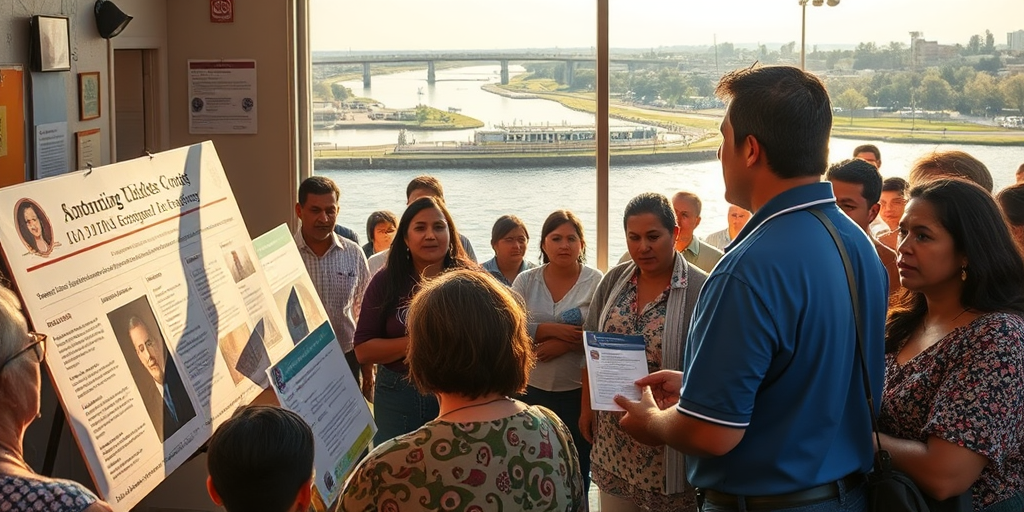**Jaime Longoria Urges Action as Key Support Programs Face Elimination**
Jul 2, 2025
The Rio Grande Valley (RGV) is facing a potential crisis as federal proposals threaten essential community programs, with significant local impact likely if budget cuts proceed. Jaime Longoria, Executive Director of the Hidalgo County Community Service Agency (CSA), has sounded an alarm, urging the community and local leaders to advocate against proposed federal budget changes that could severely affect services across the Valley.
**Overview of the Proposed Federal Cuts**
The “Big, Beautiful Bill” and the President’s “skinny budget” both present budgetary proposals that would drastically cut funding for vital programs. These include Supplemental Nutrition Assistance Program (SNAP), Medicaid, Community Services Block Grant (CSBG), and the Low-Income Home Energy Assistance Program (LIHEAP), among other community interest initiatives in South Texas.
Longoria emphasized during a meeting of the Hidalgo County Prosperity Task Force that the proposed changes would lead to an approximate $12 million annual loss for Hidalgo County. A vast array of services, such as AmeriCorps programs that support Valley residents, stand to be impacted.
**Local Programs at Stake and Their Impact**
The CSBG currently channels $2 million annually into programs in Hidalgo County. This funding supports services that respond to emergencies, offer educational assistance, and benefit broadly disadvantaged groups, including an estimated 25,000 individuals aged 16-24 lacking high school diplomas. Cuts in these areas could therefore hinder the empowerment and progress of many community members.
Similarly, LIHEAP provides essential aid by covering utility costs for approximately 8,000 Valley families, predominantly supporting seniors and children who form a significant portion of the recipients. According to Longoria, these programs have long served as a backbone for community support.
“We cannot ignore the data,” Longoria stated. “Our community comprises hard-working families, seniors, and young people aspiring for better futures. Removing this foundational support does more than affect their balance sheets—it risks their well-being.”
**Historical Context: Economic and Social Significance**
The RGV has, over the years, depended on these federal programs to mitigate socioeconomic challenges endemic to the region. With a history of resilience and community-centric initiatives, such programs like AmeriCorps’s Foster Grandparents and the Retired Senior Volunteer Program (RSVP) have been pivotal. They not only provide employment for volunteers but contribute significantly to the fabric of local service networks.
The significance of maintaining these programs goes beyond financial metrics. In communities such as those in Cameron, Starr, and Willacy counties, the potential for these cuts to obliterate ongoing efforts is an all-too-real concern. Local initiatives have historically played essential roles during crises, offering immediate support and maintaining a safety net.
**Weighing Future Consequences**
Without action, these budget proposals could set a worrying precedent, not just for funding but for stakeholder relationships between federal entities and the communities they serve. Many local leaders are concerned that it could stunt economic growth and exacerbate existing disparities in the Valley.
Dr. Alejandro Gomez, a local economist, expressed grave concern over the broader ramifications. “If these cuts proceed, we risk undercutting our community’s ability to sustain itself. It’s not merely a case of lost funding; it’s a step backward for progress made in economic self-reliability,” Gomez explains.
**Addressing Divergent Perspectives**
Counterpoints to Longoria’s advocacy suggest that funding reallocation could result in more targeted and effective use of resources—an argument that remains highly debated in policy circles. Proponents for some budget cuts argue in favor of fiscal efficiency, although critics highlight the high cost of losing established support structures.
**Path Forward and Community Resources**
As Hidalgo County navigates these complex challenges, community leaders are tasked with rallying support while seeking alternative partnerships and funding streams. Continued engagement and advocacy with federal representatives remain crucial.
For those wishing to join this effort or learn about ongoing meetings and advocacy opportunities, the Texas Border Business remains an active resource, providing updates and insights into these legislative developments. Residents are encouraged to attend community forums and contact local offices for more information.
In summary, while the situation is complex, the stakes for the RGV community are high. Careful deliberation and unified community action will be essential to safeguarding the future prosperity and well-being of the Valley’s residents against proposed budget cuts. As this story develops, anticipation builds around how the community might once again prove its intrinsic resilience.







